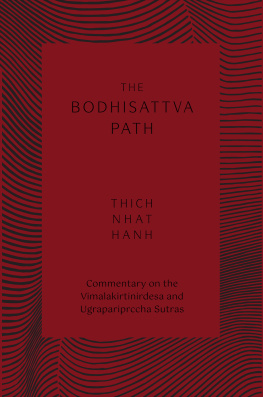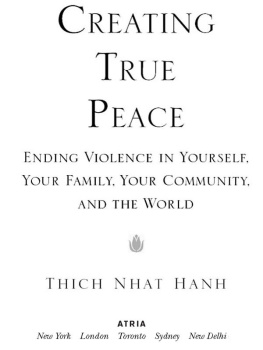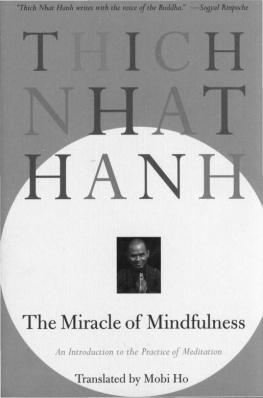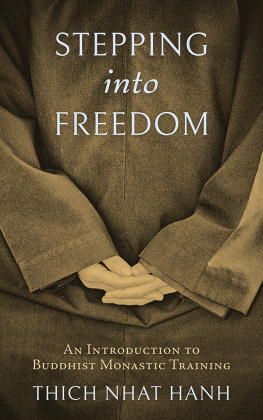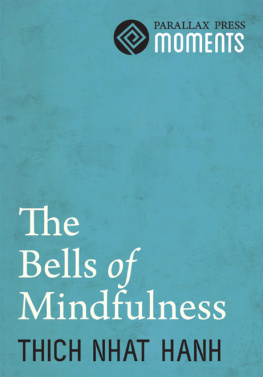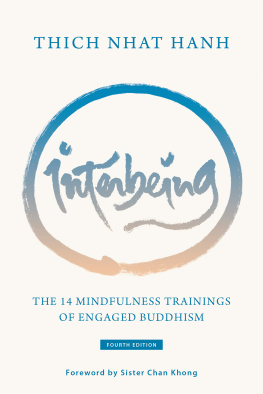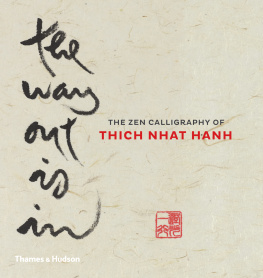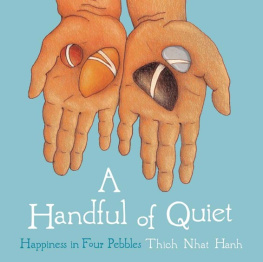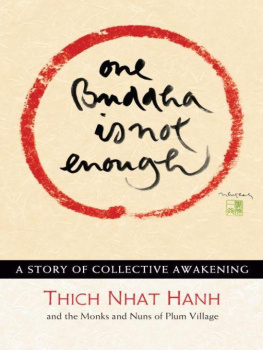Plum Blossom Books
P.O. Box 7355
Berkeley, California 94707
Plum Blossom Books is an imprint of Parallax Press, the publishing division of Unified Buddhist Church, Inc.
Original edition 2001 by Unified Buddhist Church.
2010 by Unified Buddhist Church.
All Rights Reserved.
Cover illustration by Philippe Ames.
Illustrations by Nguyen Thi Hop and Nguyen Dong ().
All other illustrations by Philippe Ames.
Cover design by Gopa & Ted2 Inc.
Library of Congress Cataloging-in-Publication Data
Nht Hanh, Thch.
A pebble for your pocket : mindful stories for children and grown-ups / Thich Nhat Hanh. [Rev. ed.]
p. cm.
ISBN 978-1-935209-45-4
1. Religious lifeBuddhismJuvenile literature. I. Title.
BQ5405.N48 2010
294.3444083dc22
2010001769
Ebook ISBN: 978-1-937006-06-8
v3.1
Contents
Precious gems are everywhere in the cosmos
and inside of every one of us.
I want to offer a handful to you, my dear friend.
Yes, this morning, I want to offer a handful to you,
a handful of diamonds that glow from morning to evening.
Each minute of our daily life is a diamond that contains
sky and earth, sunshine and river.
Thich Nhat Hanh
Introduction
W hen I was nine, I saw an image of the Buddha sitting peacefully on the grass on the cover of a magazine. Right away I knew that I wanted to be peaceful and happy like that too. Two years later, five of us boys were sitting together talking about what we wanted to be when we grew up. We explored many different fields; one boy said he wanted to be a doctor, another said an engineer, and so on. But after a while, we found that nothing really appealed to us.
Then my brother Nho said, I want to become a monk. This was a novel idea, but I knew I also wanted to become a monk. In part it was because of the picture on the magazine.
Then one boy said, Why dont we all become monks? It was childrens talk, but in fact all five of us did become monks. One boy became a Catholic monk, and the other four of us became Buddhist monks. And to this day, three of us are still monks.
The seed of becoming a monk was planted deeply in me after that discussion. I really wanted to become a monk, but I knew for my parents it would be difficult to accept because the life of a monk is a very modest one, and they wanted their children to enjoy the good things in life. I knew that I had to carefully prepare them.
I kept a diary, and from time to time I wrote about my aspiration to become a monk. One day I asked my mother to read my diary to my father so that they would get accustomed to the idea. It was too hard for me to do it directly. In that way, going slowly, step by step, I won the approval of my parents and was allowed to go to the temple. I became a novice at the age of sixteen.
Being a monk means that I spend a lot of time paying attention to the present moment. And everyone can live this way, whether or not you are a monk or nun. We call this mindfulness. The stories in this book are all about mindfulness. There can be no happiness or peace without mindfulness. Mindfulness is remembering to come back to the present moment. Everything we are looking for is right here in the present moment. When we allow ourselves to be in the present moment, we have the capacity to touch all the wonderful things inside us and around us. But if we do not allow ourselves to be in the present moment, we will continue to run and to struggle.
Mindfulness helps us to live more happily and to see the beauty of things more deeply. When you look at the full moon with mindfulness, it is much more beautiful. When you hug someone with mindfulness, that person will be more real and sweet. You can say silently,
Breathing in, shes alive and in my arms.
Breathing out, Im so happy.
Without mindfulness, you are not really alive. Being mindful makes everything you do seem brighter, more beautiful. When you look at a flower with mindfulness, the flower reveals its beauty to you. To practice mindfulness is to be happy and to enjoy what the moment brings you, including all the wonderful things inside of youyour eyes, your heart, your lungsand all the wonderful things outsidesunshine, people, birds, trees. Practicing mindfulness, you will find that you have even more reasons to be happy than you thought.
Mindfulness also helps to heal pain. When pain comes in touch with mindfulness, the pain begins to slowly dissolve. If you have pain but dont know it, that pain will stay with you for a long time. But when you are aware of your pain and you embrace it with the arms of your mindfulness, then that pain begins to transform.
When you are in pain, you can use your mindfulness to hold your pain tenderly, just as a mother takes her crying baby into her arms to quiet him or her. If you embrace your pain in this way, it will transform. A crying baby should not be left unattended, and neither should your pain.
In the early morning, the flowers are closed, but when the sun shines, tiny particles of sunshine penetrate into the flowers, and you soon see a transformation. Each flower opens and shows itself to the sun. Our suffering is like that; if we expose it to the light of mindfulness, it will change.
Stories

Who Is the Buddha?
S ome years ago, I visited a village in India called Uruvela. Two thousand six hundred years ago, a man named Siddhartha lived near that village. Siddhartha is the man who later became known as the Buddha.
The village of Uruvela remains very much the same as it was back then. There are no big buildings, no supermarkets, no freeways. It is very pleasant. The children have not changed either. When Siddhartha lived there, children from that village became his friends and brought him food and simple gifts.
There is a river that runs near the village. It is where Siddhartha used to bathe. A grass called kusha grass still grows on the banks of the river. It is the same kind of grass that one of the children gave Siddhartha to use as a cushion to sit on. I walked across the river, and I cut some of the kusha grass and brought it home with me.
On the other side of the river, there is a forest. That is where Siddhartha sat in meditation under a tree called the Bodhi tree. It is under that tree that he became the Buddha.
A Buddha is anyone who is awakewho is aware of everything that happens inside and around herand who understands and loves deeply. Siddhartha became a fully awakened being, a Buddha. He is the Buddha that we have accepted as our teacher. He has said that each one of us has a seed of awakening within us and that all of us are future Buddhas.
When he was very young, a student of mine struggled with the question of Who is the Buddha? The students name was Hu, and this is his story.
When Hu was six or seven years old, he asked his father and mother if he could become a monk. Hu loved going to the Buddhist temple. He used to go there with his parents on new moon and full moon days to offer flowers, bananas, mangoes, and all kinds of exotic fruit to the Buddha.


